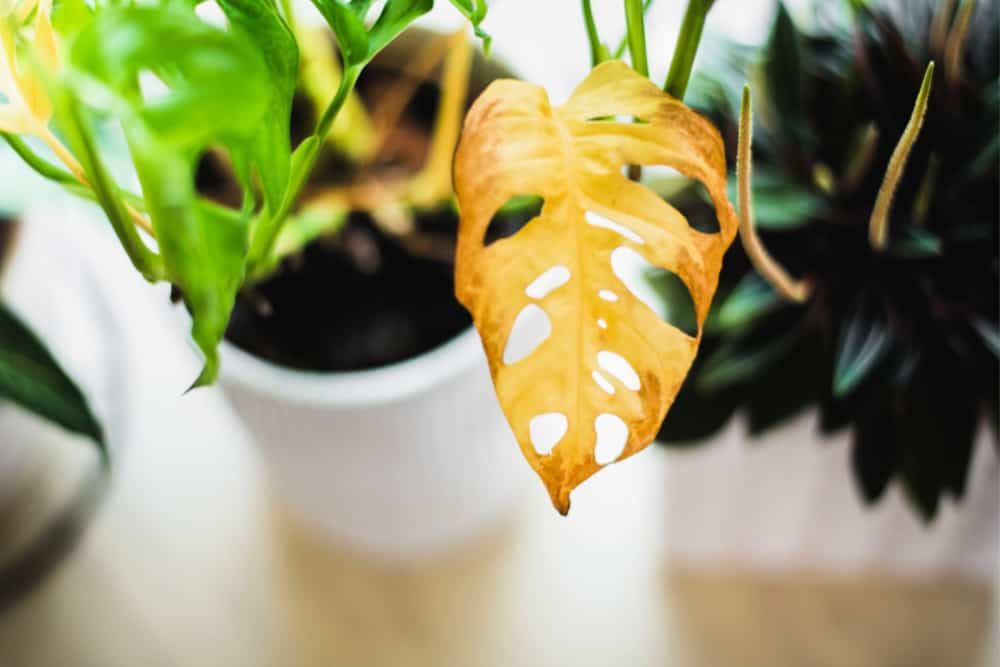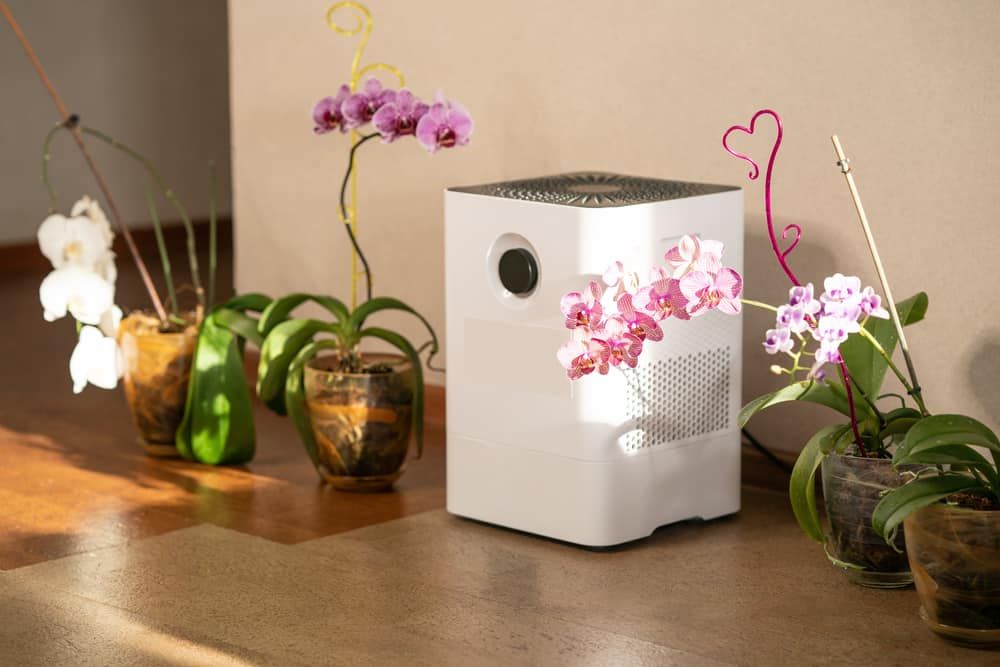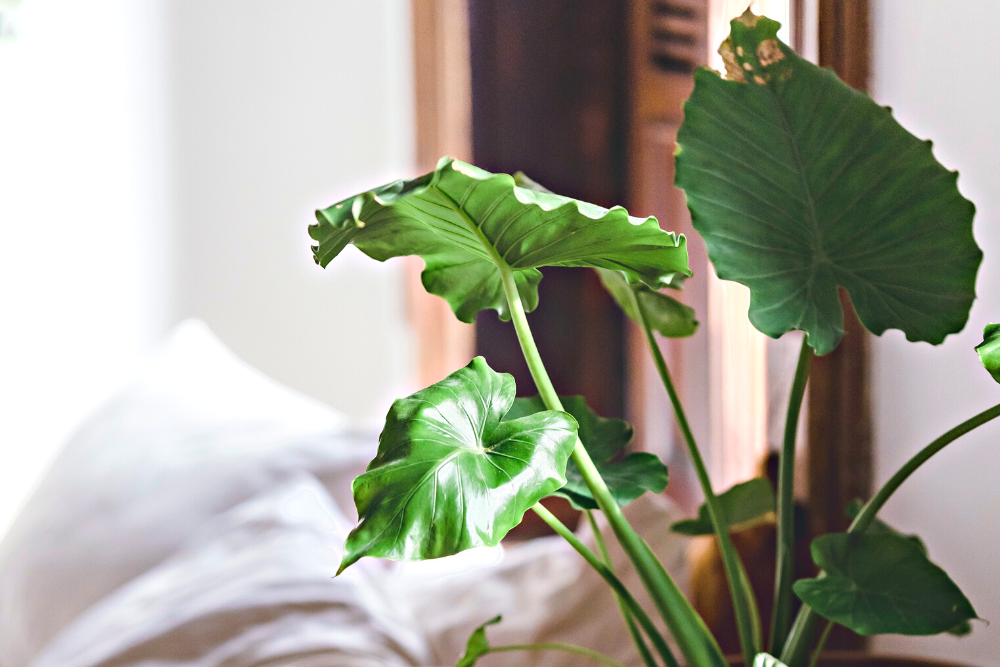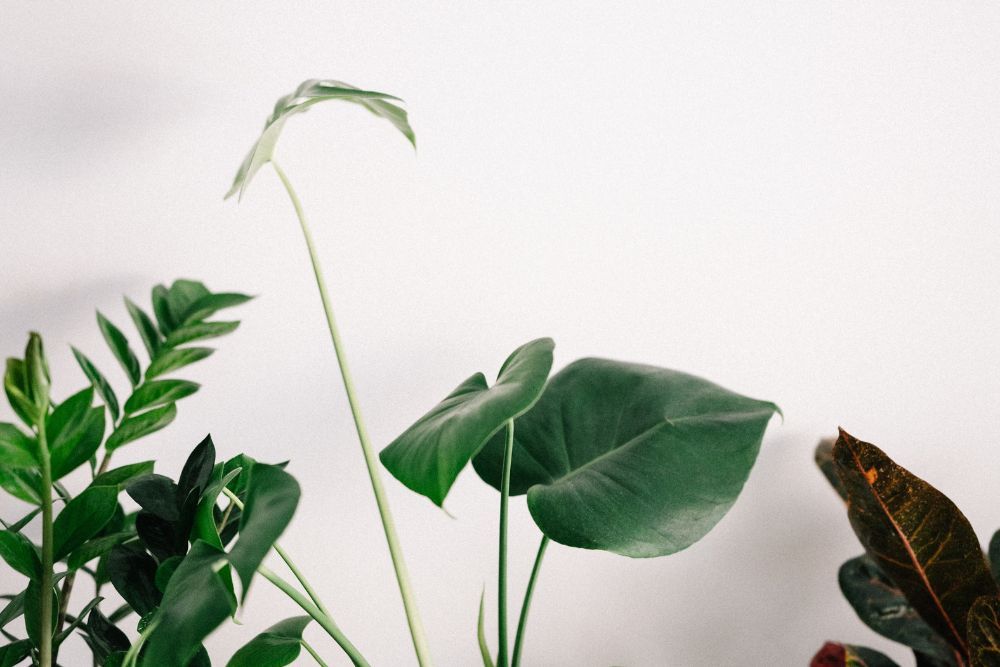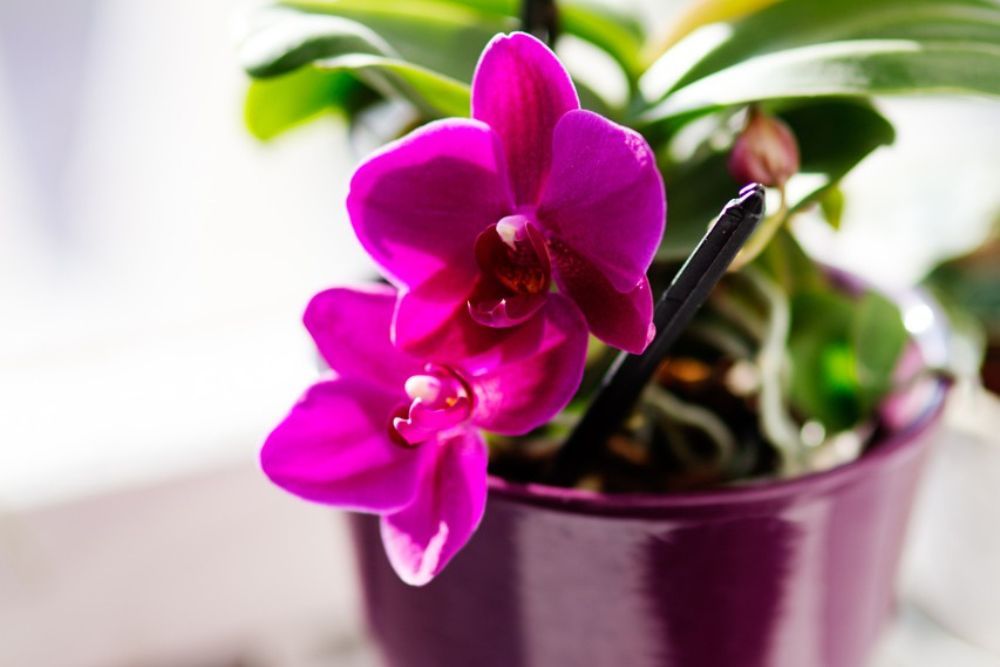Sometimes, no matter how much love and care your houseplants receive, they can still be vulnerable to one or more problems. It is even more frustrating when more than one culprit creates these problems for your indoor garden.
Your best defense is to be watchful and proactive, being sure to tackle issues early rather than letting them linger. Here are seven common houseplant problems to catch and some effective strategies to fix them.
Yellowing Leaves
Image credits: Jus_Ol via Shutterstock
Yellowing, or chlorosis, occurs when something in a plant’s environment causes a lack of chlorophyll, the pigment responsible for the green color in plants.
SOLUTIONS
1. Watering plants too much or too little can cause yellowing. Use a soil moisture meter to help you hone your watering schedule.
2. Check if your plant is getting enough light.
3. Ensure that the soil drains properly. Pots should have drainage holes, and make sure plants do not sit in water for any time.
4. Increase the humidity indoors.
5. Protect plants from temperatures that are too cool for them or temperature fluctuations.
6. Apply a houseplant fertilizer. The plant might be starving for nutrients.
7. Give plants time if you have recently repotted them, which can also cause yellowing.
Low Humidity
Image credits: Dina V via Shutterstock
Indoor air typically lacks moisture, especially in winter when furnaces are on full blast. As a result, houseplants might develop brown patches or edges and curling leaves. They might also wilt and dry up or have flower buds that do not open completely.
SOLUTIONS
1. Place a humidifier near plants to add extra moisture. In winter, turn the humidistat for the furnace to a higher setting.
2. Leave the bathroom door open when you shower.
3. Place water in a tray or shallow container near your plants to create a mini climate.
4. If you mist plants to improve humidity, do it often throughout the day. Otherwise, it’s of little benefit.
Brown Leaf Tips
Image credit: Tim Samuel via Pexels
It is by far one of the most common houseplant problems. It occurs when the plant loses water but, for some reason, cannot replace it adequately.
SOLUTIONS
1. Follow the solutions above to improve humidity in your home.
2. Rethink your approach to watering. Do not let the soil dry out for too long between watering. Also, be consistent with the amount of water you give the plants.
3. Reduce the amount of fertilizer or fertilize less often.
4. Flush soil, especially older houseplants, to get rid of salts and hard water buildup in pots.
5. Monitor indoor temperature. If it’s too low, it can cause brown leaf tips.
Leggy or Lanky Plants
Image credits: Annie Spratt via Unsplash
Instead of having robust, attractive shapes, some houseplants become “leggy” or lanky. They grow very tall with elongated stems and few leaves. Legginess is usually a sign that plants struggle to get the light they need to grow and survive.
SOLUTIONS
1. Always determine the amount of light a houseplant needs before bringing it home. Make sure you have a spot that can meet its light needs.
2. Boost the amount of light your leggy plant is getting. Place it closer to a sunny window, or use grow lights.
3. Fertilize less so that plants have a chance to grow at a more suitable pace and develop their compact, expected shape.
4. Determine the best time to prune the houseplant and do it. For most houseplants, it’s best to prune at the beginning of their growing season. However, woody houseplants need year-round pruning, while flowering plants should be pruned when they have finished flowering.
Fungus Gnats
Image credits: Akchamczuk via Canva
Also known as soil gnats, these tiny flies thrive in potting mix, soil, and other planting media. While adult flies do not damage plants, their larvae feast on fungi and decomposing matter in the medium and damage plant roots. Left unchecked, a small number of fungus gnats can quickly balloon into a full-blown swarm.
SOLUTIONS
1. Neem oil suffocates gnats. Use it to create your organic insecticide to treat soil infected with these pests.
2. Remove as much decomposing matter in the soil you use for your houseplants.
3. Use only pasteurized potting soil or mix. You can purchase it or learn how to sterilize soil at home.
4. Place yellow sticky tape traps in the soil.
No or Few Flowers
Image credits: Karolina Grabowska via Pixabay
Flowering houseplants elevate your indoor garden of green to a buffet of color that’s a feast for the eyes, spirit, and even the nose. But when a houseplant doesn’t flower when it should, it’s a sign that the environment in your home isn’t meeting its needs.
SOLUTIONS
1. Check the time of year because some houseplants flower during a specific period.
2. Review the light in the space. Flowering houseplants require lots of light, even cacti that bloom.
3. Check the temperature. Many species of houseplants need temperature drops during specific seasons or from day to night to bloom.
4. Fertilize well at the right time. Indoor plants need to be fed well during their active growing periods. But don’t overdo it. Too much fertilizer causes fewer flowers.
Becoming Root Bound
Image credits: Alicia Fdez via Canva
Root bound means that the roots of a potted plant have grown too big for its containers. Crowded and with nowhere to go, roots struggle for nutrients and space to continue growing. You can remove the houseplants from their pots to check root growth. Or, watch for symptoms such as stunted growth, yellowing foliage, wilting, rotting, bursting pots, or pests.
SOLUTIONS
1. Repot the plant. Water it two to three days before repotting.
2. Remove the plant from its current pot and loosen and untangle the roots.
3. Using sterilized shears, prune roots that are extra long but leave thicker roots in place.
4. Have a pot that is 1 to 2 inches bigger in diameter than the current pot ready. It should have drainage holes.
5. Using a fresh potting mix or soil, transplant the plant into the new pot.
6. Wait a few days before watering the plant again.
Helping Houseplants Thrive
In many cases, you can overcome houseplant problems with simple, affordable strategies. Always keep in mind that most problems will require a combination of solutions. You will also have to be patient to restore your plants to full health and enjoy all the benefits they bestow.
Did you have a persistent houseplant problem that you resolved? Share your secret below in the comments.


